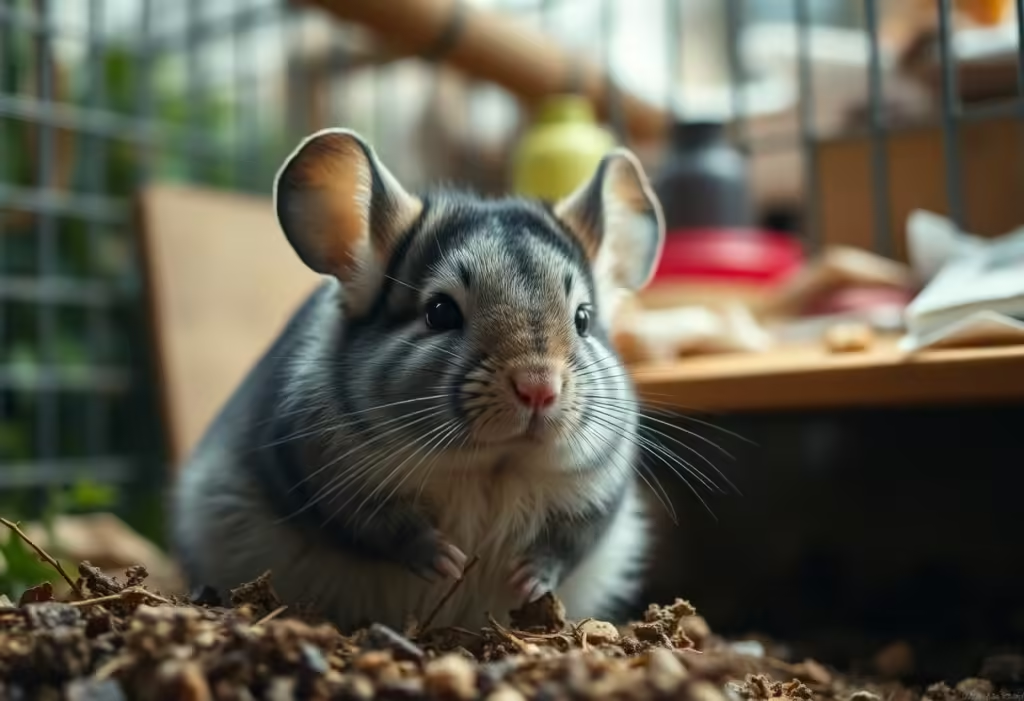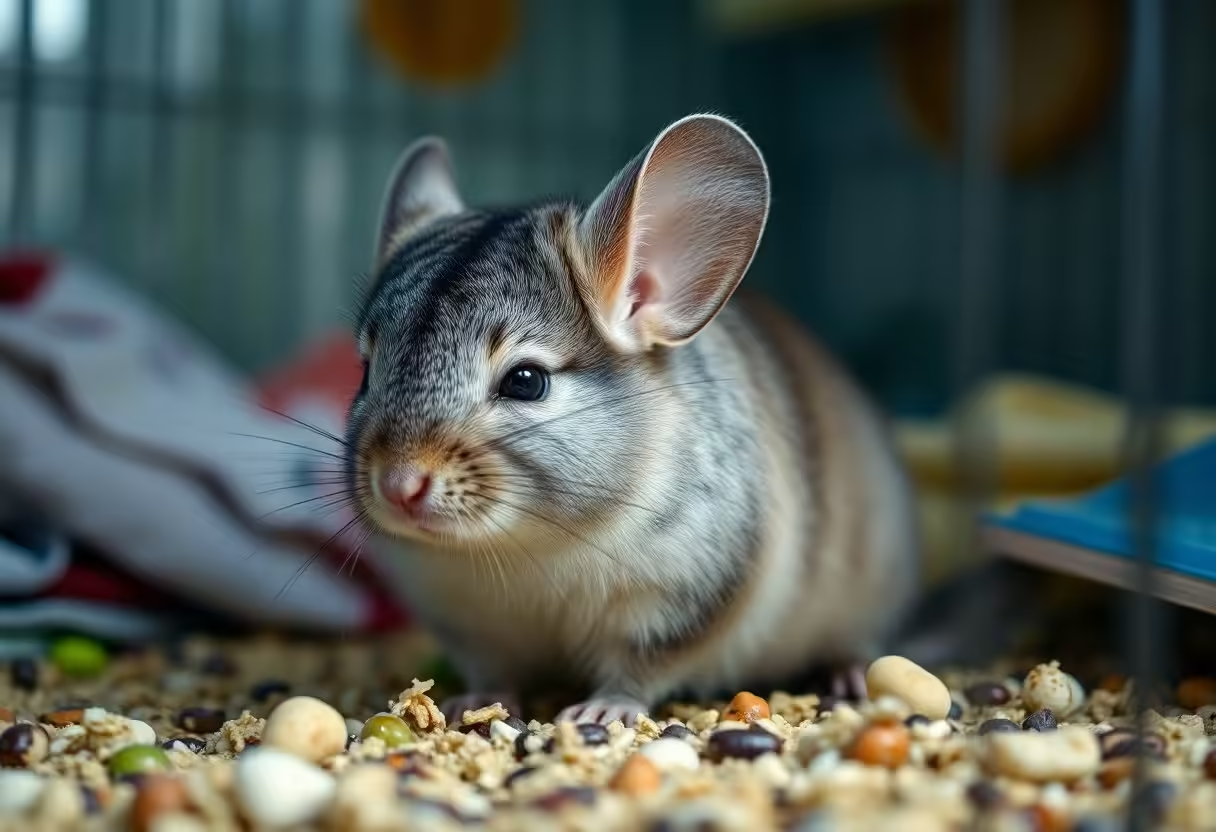Most chinchilla behavior problems stem from environmental stress, boredom, or health issues. Recognizing these behaviors and understanding their underlying causes is key to ensuring your chinchilla’s well-being and happiness. This comprehensive guide explores common behavior issues, provides practical solutions, and offers tips for creating a safe, enriching environment. By paying attention to your chinchilla’s habits, you can prevent distress and promote a strong, positive bond with your furry friend.
Key Takeaways:
- Understanding Behavior: Identifying changes in your chinchilla’s behavior is crucial for detecting stress, health issues, or environmental problems early.
- Common Issues: Aggression, chewing, escape attempts, anxiety, and health-related behaviors are frequent concerns that require careful attention.
- Enrichment Solutions: Provide a stimulating environment with toys, climbing structures, and regular out-of-cage playtime to prevent boredom and destructive behaviors.
- Health Monitoring: Changes in appetite, sleep patterns, or signs of pain should prompt a visit to the vet to rule out health issues.
- Building Trust: Using positive reinforcement techniques and gentle handling can help build trust and reduce fear, improving your interactions with your chinchilla.

Understanding Chinchilla Behavior
Chinchilla behavior can reveal much about their emotional and physical health. Behaviors like chewing, hiding, or aggression may signal underlying stress, discomfort, or health problems. Knowing their natural instincts—such as chewing to maintain dental health or hiding when scared—helps you create an environment that fosters their well-being. Regular observation allows you to spot potential issues early and adjust care practices accordingly.
1. Common Chinchilla Behavior Problems
1.1 Aggression: Biting, Scratching, or Fighting
Aggression in chinchillas is often a reaction to stress, fear, or territorial instincts. You may notice biting, scratching, or aggressive behavior toward other pets or handlers.
Common Causes:
- Fear of being handled incorrectly
- Territorial disputes, especially in confined spaces
- Lack of proper socialization or overstimulation
Solutions:
- Start handling sessions slowly, building trust with gentle and calm interactions.
- Provide a larger enclosure with safe hiding spots to reduce territorial aggression.
- Limit exposure to stressful situations like loud noises or excessive handling.
1.2 Chewing and Destruction: Furniture, Wires, or Household Items
Chinchillas naturally chew to keep their teeth healthy, but this becomes problematic when they chew on furniture, wires, or other dangerous objects.
Common Causes:
- Boredom and lack of mental stimulation
- Anxiety or stress due to environmental factors
- Insufficient access to safe chew toys
Solutions:
- Provide a variety of safe chew toys made of wood or pumice to satisfy their chewing instinct.
- Enrich their cage with climbing structures and tunnels to keep them engaged.
- Chin-proof your home by covering electrical wires and removing small objects that could be ingested.
1.3 Escape Attempts and Boredom-Driven Behavior
If your chinchilla frequently attempts to escape from their cage, it may be due to boredom or inadequate space to explore and play.
Common Causes:
- Boredom caused by a lack of stimulation or activities
- Cramped or poorly designed cage spaces
- High energy levels requiring more physical activity
Solutions:
- Ensure the cage is spacious, with multiple levels for jumping and climbing.
- Rotate toys and add new enrichment items to keep their environment stimulating.
- Provide supervised out-of-cage playtime in a chin-proof area to allow for safe exploration.
2. Anxiety, Stress, and Related Behavior Problems
2.1 Anxiety and Stress: Hiding, Trembling, or Pacing
Chinchillas may exhibit anxiety or stress through behaviors like hiding, trembling, or pacing back and forth in their cage. These reactions are often triggered by environmental factors.
Common Causes:
- Loud noises or sudden changes in the environment
- A lack of hiding spots or safe spaces in the cage
- Inconsistent routines or exposure to unfamiliar situations
Solutions:
- Provide a quiet, calm environment and make sure the cage includes plenty of hiding spots where your chinchilla can retreat when stressed.
- Establish a consistent routine for feeding, cleaning, and handling to reduce anxiety.
- Gradually introduce new stimuli or experiences to avoid overwhelming them.
2.2 Separation Anxiety: Distress When Left Alone
Some chinchillas may become distressed when left alone for long periods or when separated from their owners or cage mates.
Common Causes:
- Loneliness due to isolation
- Emotional attachment to their owners or companions
Solutions:
- Maintain a daily interaction schedule, offering playtime and gentle handling to provide emotional security.
- If possible, introduce a compatible cage mate (after proper introductions) to alleviate loneliness.
- Use toys, tunnels, and enrichment items to keep them mentally stimulated when you are not around.
3. Health-Related Behavior Problems
3.1 Signs of Pain or Discomfort: Pacing, Restlessness, or Lethargy
If your chinchilla is pacing, showing restlessness, or becoming unusually lethargic, it could indicate pain or discomfort due to an illness or injury.
Common Causes:
- Dental problems or digestive issues
- Temperature discomfort (too hot or too cold)
- Injuries or infections
Solutions:
- Regularly check for physical signs of discomfort, such as fur loss or abnormal droppings.
- Consult a veterinarian immediately if these behaviors persist, as early detection can prevent more serious health complications.
- Ensure your chinchilla’s environment is comfortable, with adequate bedding and proper temperature regulation.
3.2 Changes in Appetite or Sleep Patterns
Changes in appetite or sleep patterns can be early warning signs of health problems or stress.
Common Causes:
- Illness or underlying health conditions
- Changes in diet or discomfort due to environment changes
Solutions:
- Monitor your chinchilla’s eating habits and weight. Loss of appetite, rapid weight loss, or a sudden disinterest in food can signal illness.
- If these changes persist, consult a vet to rule out serious health issues.
4. Environmental Factors Impacting Behavior
4.1 Cage Setup and Enrichment
A well-designed cage is critical to your chinchilla’s mental and physical health. A lack of space or proper enrichment can lead to stress, anxiety, or destructive behaviors.
Solutions:
- Provide a large cage with multiple levels and climbing structures to encourage activity.
- Include a variety of safe toys like chewable wood, tunnels, and hiding spots to keep your chinchilla engaged.
- Regularly rotate toys to prevent boredom.
4.2 Temperature Sensitivity
Chinchillas are highly sensitive to temperature changes. Extreme heat or cold can cause discomfort and stress, affecting their behavior.
Temperature Guide:
- Above 75°F: Heat stress, leading to lethargy or potentially dangerous heat stroke
- Below 60°F: Risk of hypothermia or stress
Solutions:
- Keep the environment within an ideal range of 60–70°F, ensuring the cage has good ventilation and is not exposed to direct sunlight.
- In hot climates, use fans or air conditioning to maintain a cool, safe temperature.
5. Solutions and Training Techniques
5.1 Trust-Building Strategies
Building trust with your chinchilla takes time and patience. It’s important to let your pet approach you on their terms to avoid stress.
Solutions:
- Sit near the cage without trying to handle them at first, allowing your chinchilla to get used to your presence.
- Gradually offer treats from your hand to encourage interaction and build trust.
- Respect your chinchilla’s space, providing hiding spots where they can retreat if they feel overwhelmed.
5.2 Positive Reinforcement Methods
Positive reinforcement is a powerful tool for training chinchillas and addressing behavior problems. Rewarding good behavior with treats and praise encourages your chinchilla to repeat positive actions.
Solutions:
- Use small, healthy treats to reward your chinchilla when they engage in desired behaviors.
- Keep training sessions short and enjoyable to prevent overwhelming your chinchilla.
- Focus on reinforcing trust by rewarding small steps, like approaching you or interacting with toys.

Tips for a Happy Chinchilla
- Provide a spacious cage with multiple levels and safe, chewable toys.
- Keep the environment at a comfortable temperature between 60–70°F.
- Engage your chinchilla in daily playtime outside the cage, offering safe, supervised exploration.
- Establish a consistent routine for feeding, cleaning, and handling to build trust and reduce anxiety.
Conclusion
By understanding and addressing your chinchilla’s behavior problems, you can create a more harmonious environment for your pet. Whether it’s dealing with aggression, reducing anxiety, or ensuring proper environmental conditions, taking proactive steps will help your chinchilla thrive. This guide provides the insights and solutions you need to improve your chinchilla’s well-being and build a stronger bond.
FAQ
Q: Why is my chinchilla biting me?
A: Chinchillas often bite due to fear or stress. Gradually build trust through gentle handling and positive reinforcement, ensuring your chinchilla feels safe during interactions.
Q: What should I do if my chinchilla is chewing on everything?
A: Provide a variety of safe chew toys to satisfy your chinchilla’s need to chew. Make sure to chin-proof the environment by covering wires and removing small, dangerous objects.
Q: Why does my chinchilla hide all the time?
A: Hiding is a sign of stress or fear. Ensure the cage has ample hiding spots, and keep the environment calm and quiet to reduce anxiety.
Q: How can I encourage my chinchilla to play?
A: Create a safe, engaging play area with tunnels, chew toys, and climbing structures. Spend time interacting with them, and provide out-of-cage playtime in a chin-proof space.
Q: Is my chinchilla getting enough exercise?
A: Chinchillas need daily exercise. Ensure they have a spacious cage with climbing levels and provide supervised out-of-cage playtime to keep them active and healthy.
